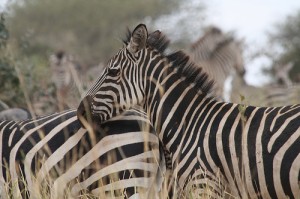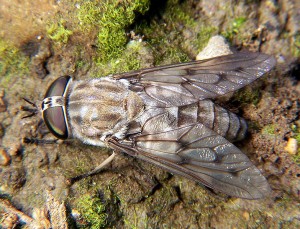Zebras, who are well known for their black and white stripes, are native to Africa and live in various habitats, such as grassland areas and woodlands. They graze together and travel in herds to protect themselves from predators.
Ever wonder how the zebra got its distinct black and white stripes? Until now it has been a mystery, but zoologists have finally figured it out. Adam Egri from Eötvös University in Budapest, Hungary, believes that zebras evolved stripes to protect themselves from blood-sucking horseflies known as tabinids that carry dangerous germs. He found that horseflies attract less to black and white stripes than all-white or all-black skin. The findings were reported in the journal of experimental biology.
How does this work? According to Egri, horseflies are attracted to polarized light to find water where they can find a mate and lay eggs. Horse models painted with black and white stripes of varying widths and angles revealed that narrower stripes attract the fewest horseflies. When comparing all-white, all-black, and black and white striped horse models, striped horses attracted the least amount of horseflies. The zebra stripes disrupt the polarized light, making them unattractive to the horseflies. Also, the attractiveness to horseflies decreased as the stripe width decreased.
Prior to this study, there have been several hypotheses on why the zebra has black and white stripes. It is thought the stripes help the zebra camouflage within herds making it difficult for predators to distinguish a single zebra but there is no evidence supporting this. The lion, zebra’s main predator, is colour-blind which could be difficult for the lion to distinguish black and white stripes among a herd. Also, each zebra has its distinct black and white stripes that could provide visual cues for other zebra to recognize each other.

I wonder if this study could be applied to other animals with stripes such as tiger with black and orange stripes. One question that remains to be answered is whether a zebra is white with black stripes or black with white stripes?



6 responses to “How The Zebra Got it’s Stripes”